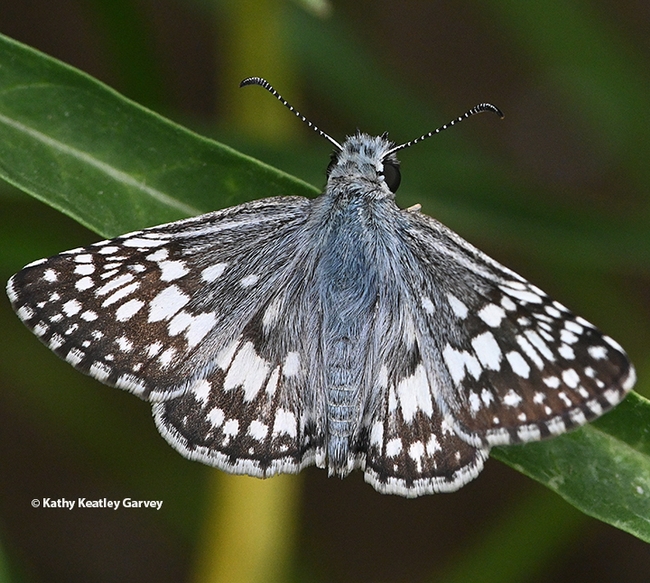A retired Fairfield elementary school teacher says that butterflies are the "gateway bug" to entomology.
It's the symmetry, the beauty, the agility, he says.
He's right.
So, forget about the old adage, "stop and smell the roses" (although that's good, too). Start with something like "Stop and check out the butterflies," including the common checkered skipper, Pyrgus communis, family Hesperiidae.
It's familiar around our favorite counties, Solano and Yolo, but not easy to photograph. This one (below) decided to be as stationary as stationery as the morning sun warmed its flight muscles. It had a place to go but it wasn't going there yet. Butterflies live in the moment.
Butterfly guru Art Shapiro, UC Davis distinguished professor of evolution and ecology who has monitored butterfly populations of Central California for 50 years, has this to say about P. communis on his research site, Art's Butterfly World:
"This familiar insect appears to be found from sea level to tree line-but things are more complicated than that. At the molecular-genetic level, the populations along our transect are apparently two different species. One is multiple-brooded and occurs as high as Lang Crossing (5000') on the Sierran West slope, and then again in Sierra Valley at 5000' on the East slope. These populations today breed largely on introduced weeds of the genus Malva (in the Sacramento Valley also on the native Alkali Mallow, Malvella leprosa, and on the now rare Checkerblooms, genus Sidalcea, in tule marshes)."
"The other," he writes, "is single-brooded, occurs above 6000' (including Donner and Castle Peak) and breeds only on native Sidalcea...
It occurs "anywhere in the open where hosts are nearby, including urban vacant lots and around ranch buildings and corrals. The montane animal occurs in open coniferous forest with Sidalcea in the understory, and along wood roads and paths. Both visit a great variety of flowers avidly. The flight seasons are March-November in the Central Valley, June-August in montane sites, and late March/April-October at Sierra Valley. (At Sierra Valley the univoltine animal is as close as the top of Yuba Pass.) Males are perchers, generally well off the ground, and extremely energetic fliers. They often appear blue in flight (females, lacking the silky hairs, do not)."
Attached Images:
